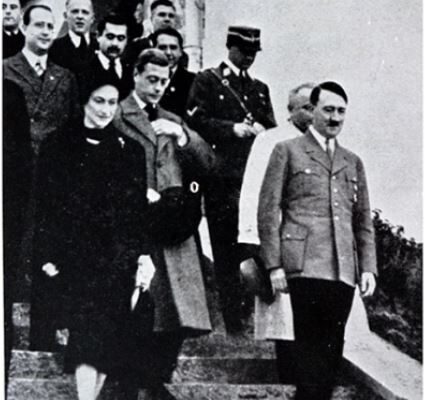Whether it was from hurt, spite or genuine fascist sympathies, his surprise at his family’s response simply confirms his stupidity
Bombs start exploding at the beginning of this book. Buckingham Palace was targeted by the Nazis early on in the war in an act of extraordinary audacity – and one that backfired. George VI noted in his diary: ‘We all wondered why we weren’t dead.’ Little did he realise that Hitler had gifted him his first wartime ace. But while George grew into the role of stoic monarch, his older brother never worked out how shake off the trammels of his birth.
The Windsors at War is a follow-up to Alexander Larman’s The Crown in Crisis, which explored the abdication of 1936. Edward VIII did not escape lightly in that book, and this sequel’s introduction reminds readers of the author’s earlier crushing conclusion: that the failed king was a ‘wretched, quixotic ruler, an obsessed and demanding lover, and, bar the odd instance of compassion and decency, a selfish and thoughtless man’. Needless to say, post-abdication, things don’t start well for the exiled duke, whose outsized ego and solipsistic tendencies were a national liability amid mounting geopolitical tension.
We relive Edward’s fateful visit to Nazi Germany in 1937, and the subsequent American snub when his transatlantic trip was cancelled. There are frosty communications between the duke, the insecure king and various lackies, in what amounted to a half-baked effort to cancel the former monarch. (The charismatic Edward would rarely be allowed back to his country again.) And we return to the duke’s exit from France, via Spain and Portugal, in the summer of 1940 – the ‘will-he-defect-to-the-Germans?’ moment before the couple were ignominiously bundled off to the Bahamas.
Read the article by Tessa Dunlop in The Spectator.

